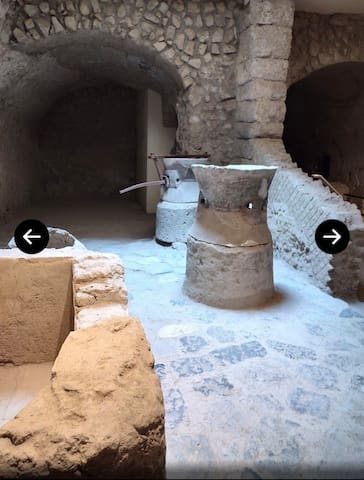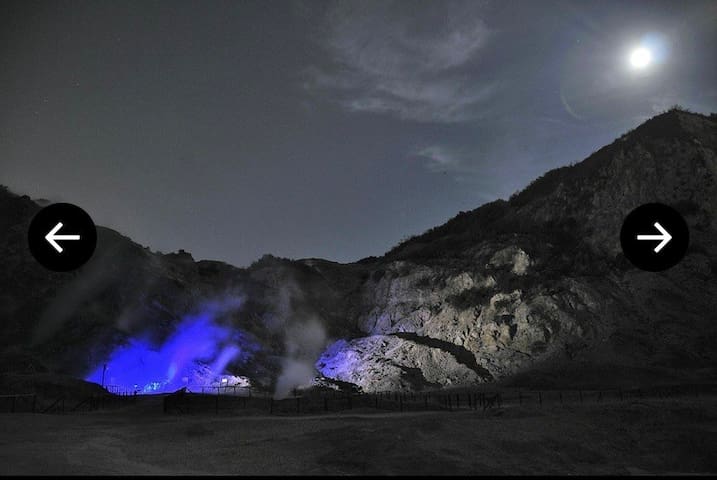Sightseeing
The Flavian Amphitheater (Italian: Anfiteatro Flavio Puteolano [aɱfiteˈaːtro 'flaːvjo puteoˈlaːno]), located in Pozzuoli, is the third-largest Roman amphitheater in Italy. Only the Roman Colosseum and the Amphitheatre of Capua are larger. It was likely built by the same architects who previously constructed the Roman Colosseum. The name "Flavian Amphitheater" is primarily associated with the Roman Colosseum.
65 locals recommend
Flavian Amphitheater
75 Corso Nicola TerraccianoThe Flavian Amphitheater (Italian: Anfiteatro Flavio Puteolano [aɱfiteˈaːtro 'flaːvjo puteoˈlaːno]), located in Pozzuoli, is the third-largest Roman amphitheater in Italy. Only the Roman Colosseum and the Amphitheatre of Capua are larger. It was likely built by the same architects who previously constructed the Roman Colosseum. The name "Flavian Amphitheater" is primarily associated with the Roman Colosseum.
The underground archaeological tour of Rione Terra is a journey in the ancient Roman colony, Puteoli , founded in 194 BC and soon became the commercial port of Rome. The course is located below the tuff rock overlooking the Gulf of Pozzuoli, between Nisida and Bay, and runs along the principal axes of the Roman city, hinges and decumani. The visitor, strolling along the streets of Puteoli, Will be fascinated by the architecture of many buildings, the granaries, the oven for processing and baking bread (pistrinum) with millstones almost intact, from cryptoporticos, the workshops and warehouses. The archaeological itinerary is enriched by multimedia installations that guide the audience to discover the activities that took place in ancient Puteoli. You can visit the site in the days Saturday , Sunday and public holidays with entrance every hour from 9am to 12pm and from 13:30 to 16:30 . To access it will be necessary to book by phone from Monday to Sunday.
42 locals recommend
Rione Terra
The underground archaeological tour of Rione Terra is a journey in the ancient Roman colony, Puteoli , founded in 194 BC and soon became the commercial port of Rome. The course is located below the tuff rock overlooking the Gulf of Pozzuoli, between Nisida and Bay, and runs along the principal axes of the Roman city, hinges and decumani. The visitor, strolling along the streets of Puteoli, Will be fascinated by the architecture of many buildings, the granaries, the oven for processing and baking bread (pistrinum) with millstones almost intact, from cryptoporticos, the workshops and warehouses. The archaeological itinerary is enriched by multimedia installations that guide the audience to discover the activities that took place in ancient Puteoli. You can visit the site in the days Saturday , Sunday and public holidays with entrance every hour from 9am to 12pm and from 13:30 to 16:30 . To access it will be necessary to book by phone from Monday to Sunday.
According to tales, in this lake is located the gate to the underworld. We came here because saw a documentary of mysteries where the host showed the “gate” with a device measuring the level of carbon dioxide and explained that priests used to placed animals there where they die to show the power but as written before never found that place (most probably off-limits).
This lake is linked to the Golden Bough myth (Aeneid, book 6); there are remains of an old circular structure called temple of Apollo (sibyls worshipped Apollo but is not clear if that was a bathhouse) and there is a tunnel built during the early Roman period that connects with the town of Cumae but it is normally closed for the public. Once Lake Avernus was connected to the sea but a series of earthquakes in the XVI century changed the landscape of the area.
Nowadays is more a tranquil lake where locals jog, bike, dog walk, birdwatch, not particularly attractive for a foreigner specially if traveling with a tight itinerary because time is precious. But if there is a special occasion that they open that tunnel with live reading excerpts of all the myths connected with this lake with Cumae historical tour, wine tasting and happen to be here in the area, it will be a great opportunity.
50 locals recommend
Lake Avernus
According to tales, in this lake is located the gate to the underworld. We came here because saw a documentary of mysteries where the host showed the “gate” with a device measuring the level of carbon dioxide and explained that priests used to placed animals there where they die to show the power but as written before never found that place (most probably off-limits).
This lake is linked to the Golden Bough myth (Aeneid, book 6); there are remains of an old circular structure called temple of Apollo (sibyls worshipped Apollo but is not clear if that was a bathhouse) and there is a tunnel built during the early Roman period that connects with the town of Cumae but it is normally closed for the public. Once Lake Avernus was connected to the sea but a series of earthquakes in the XVI century changed the landscape of the area.
Nowadays is more a tranquil lake where locals jog, bike, dog walk, birdwatch, not particularly attractive for a foreigner specially if traveling with a tight itinerary because time is precious. But if there is a special occasion that they open that tunnel with live reading excerpts of all the myths connected with this lake with Cumae historical tour, wine tasting and happen to be here in the area, it will be a great opportunity.
The Romans already knew the Solfatara since Imperial times. Strabone (66 B.C. -24 A.C.) gives the most ancient written testimony coming to us in his “Strabonis geographica”, indicating it with the name “Forum Vulcani”, dwelling of the god Volcano, entrance to Hades. The Solfatara opens up officially to visitors in the year 1900, although it was since time immemorial destination for its renown volcanic phenomena, for the therapeutic properties of the sulfurous waters and for the hot saunas; it was in fact included among the forty most famous thermae of the Phlegreaen Fields since the Middle Ages.
89 locals recommend
Solfatara
The Romans already knew the Solfatara since Imperial times. Strabone (66 B.C. -24 A.C.) gives the most ancient written testimony coming to us in his “Strabonis geographica”, indicating it with the name “Forum Vulcani”, dwelling of the god Volcano, entrance to Hades. The Solfatara opens up officially to visitors in the year 1900, although it was since time immemorial destination for its renown volcanic phenomena, for the therapeutic properties of the sulfurous waters and for the hot saunas; it was in fact included among the forty most famous thermae of the Phlegreaen Fields since the Middle Ages.
Simply stunning underground archeology. The history of this area is just mind blowing. The cathedral is one of the wonders of the world.
Cathedral Basilica San Procolo Martire
Via DuomoSimply stunning underground archeology. The history of this area is just mind blowing. The cathedral is one of the wonders of the world.




